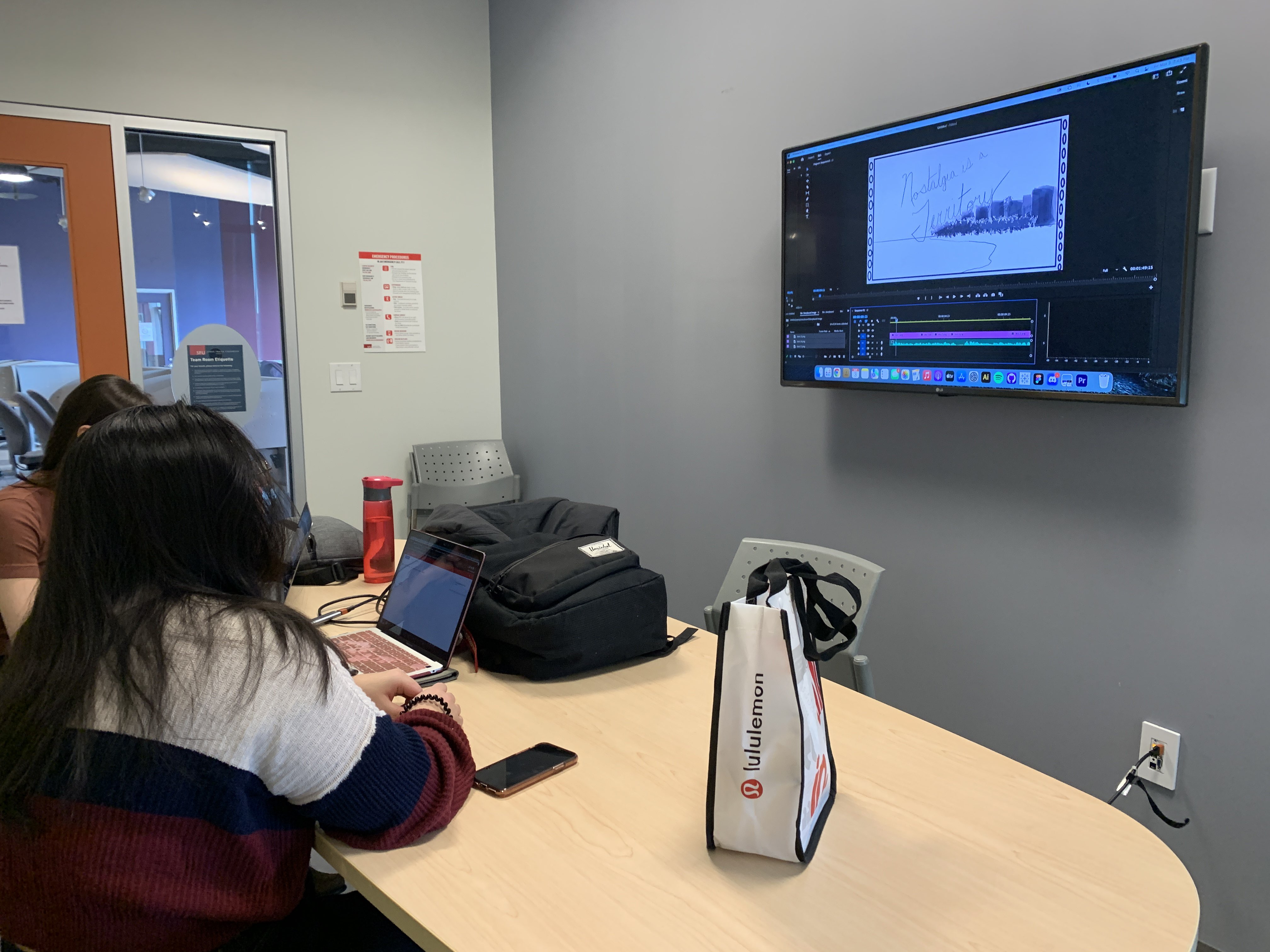Postcard Home From English Bay Poetry Video
Overview
The poetry video for Alex Leslie’s poem “Postcard Home from English Bay”, seen in Figure 1, is a video that I completed as a team of three for a digital video production course and as a submission to the Vancouver Poet Laureate, Fiona Tinwei Lam’s City Poems Poetry Video Contest. The contest involved students from a selection of post-secondary courses related to media and film to create short poetry videos using a curated list of poems that explore the cultural and historical sites of Vancouver as its subject matter. Out of the poems provided from the list, “Postcard Home from English Bay” stood out for its vivid imagery that contrasted beautifully with the cynical tone which resonated and inspired my team’s desire to further explore its themes. Throughout the production of the video for the contest, we were privileged to receive feedback from both Fiona Tinwei Lam, and Alex Leslie themselves on the project, which was valuable for my team’s confidence in the resulting video.
The video my team produced visually adapts and extrapolates Leslie’s surreal, hyperbolic exploration of the dichotomy between the beauty and the socio-economic issues of the city’s development using collage. In the creation of the video, my roles primarily revolved around the visual direction of the video being the director and a compositor.
Direction
To determine the initial direction for the project, the team needed to thoroughly understand and explore various interpretations of the poem. Figure 2 is my analysis of how I interpreted the poem from which I drew inspiration while discussing the styles for the piece as well as the choices in imagery to accentuate. Due to the surreal, abstract images of the text, the team decided on the direction of a collage style to emulate the chaos and allow us to create further meaning through juxtaposition which is shown in the mood board in Figure 3.

A challenge that the team and I faced was with our initial written treatment of the video, in which were not able to articulate what content we intended to include which became more evident after receiving critiques that were general and quite vague. This was resolved after I began to create a storyboard during which I found that my thought process and confidence in that process were significantly improved when I could articulate my vision through drawing. The storyboarding phase began with some initial sketches, seen in Figure 4, which I presented, discussed, and debated with the team over the sequential order and interpretation of various shots. After receiving and implementing some ideas gained from the feedback, I created a finalized version of the storyboard seen in Figure 5.


Before production had started, the team decided to create an animatic using the images from the storyboard to work out a preliminary timing of the visuals for the reading of the poem. Figure 6 shows the meeting for the creation of the animatic where the overall timing and pacing of the video were decided. The animatic was essential as it allowed the compositor, including myself to work in parallel with the sound designer by providing a locked base from which each team member would refer when making their creative decisions. The resulting animatic can be seen in Figure 7.

Compositing
An essential part of compositing the shots in the video was the gathering and extracting of various assets necessary for the compositions. This task proved challenging as it proved to be an unexpectedly difficult and time-consuming process as it required a lot of time dedicated to finding assets that I could use legally. Sometimes it would require scrounging online creative commons resources, some needed photos that I had taken, and other times creating the assets myself using 3D renders from Blender or creating a logo using Illustrator seen in Figure 8 and Figure 9 respectively.

The assets would all be collected into a Photoshop file to be further manipulated through masking and colour correction as well as creating an initial static composition to understand the size relationships of the elements within the frame. The assets were then imported into After Effects to complete the animation, as seen in Figure 10.
Another challenge that occurred was the later requirement to integrate the full written text of the poem into the film. The original plan for the video had only specific lines of the poem to be emphasized in the film which were accounted for in the composition of the shots, as seen in the rough cut in Figure 11 compared to the final version in Figure 1. To match the rest of the video, since we using some lines within the composition through collage, we decided to integrate the text within the composition instead of using captions. This meant that the compositors now had to find a way to integrate the text into shots that were edited and paced with the assumption that the audience would not have to read which was overcome through finding ways to fully utilise collage style.
Reflection
Overall, this was a highly rewarding, and creative project. Having the honor to collaborate with the Vancouver Poet Laureate and the Alex Leslie whose poem our video was adapting was a highly valuable experience and allowed me to be confident in the direction that our video was taking. Through this production I was able to learn a lot about which aspects of preproduction I enjoy and areas, like written treatments, that I still need to work on. I am incredibly happy to share this experience with my wonderful team mates and excited to see our efforts recognized by the our teaching staff when our team was awarded for the best video poem at our class’s screening (Figure 12).

References
- Leslie, A. (2023). Postcard Home From English Bay [A. Leslie]. Fiona Tinwei Lam’s Eligible Poems for City Poems Poetry Video Contest [m4a]. https://tinwei.files.wordpress.com/2023/01/english-bay-read-by-alex-leslie.m4a